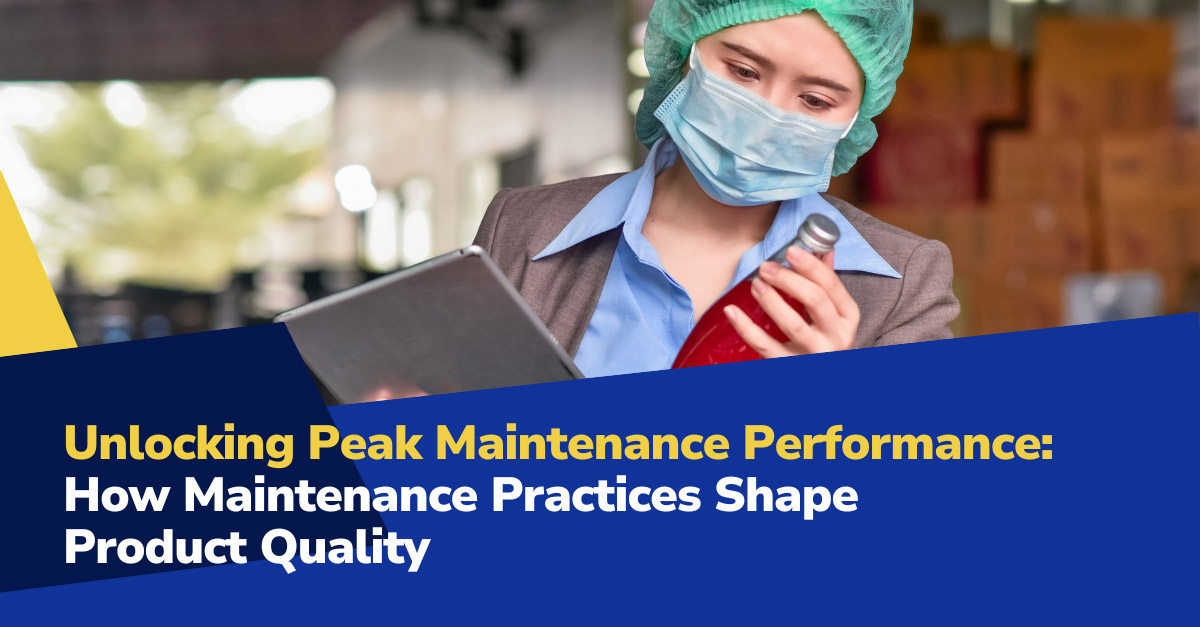
In the manufacturing world, the quality of the end product is not just a goal—it’s the benchmark for success. While Overall Equipment Effectiveness (OEE) provides a broad view of operational health, the integrity of what rolls off the production line is where the rubber meets the road.
Poor maintenance practices can have a silent but devastating impact on product quality. Let’s explore the top 10 ways in which maintenance missteps can degrade product quality, influencing both immediate output and long-term brand perception.
Compromised Production Quality: The Visible Outcome
Product quality is the ultimate display of a company’s commitment to its customers. It’s a critical, direct output metric with an industry-standard target of near 100% first-pass yield. However, poor maintenance can cause this figure to plummet, increasing defect rates by as much as 10-20% and signaling a red alert for manufacturing operations.
The Top 10 Maintenance Missteps Affecting Product Quality:
1Increased Defect Rates:
Equipment failures can more than double the baseline defect rate, resulting in a 5-15% increase in products that fail to meet quality standards.
2Elevated Rework Costs:
Faulty machinery often means products need reworking, potentially inflating rework costs by up to 25% of total manufacturing costs.
3Spike in Recall Incidences:
Recalls can surge by up to 20%, not only incurring direct costs but also damaging brand integrity in the eyes of consumers.
4Material Waste Magnification:
Waste of raw materials can rise by 10-30% due to imprecise cutting, molding, or assembling due to poorly maintained equipment.
5Deterioration of Brand Reputation:
Perceived quality can dip by 50% in customer surveys following consistent product failures tied to maintenance issues.
6Customer Loyalty Decline:
A direct outcome of poor product quality can be a 5-10% decrease in repeat business from formerly loyal customers.
7Compounded Warranty Claims:
Subpar quality control due to lax maintenance can lead to a 10-20% increase in warranty claims, with the added insult of warranty service costs.
8Extended Cycle Times:
Poor equipment conditions can extend production cycle times by 5-15%, compounding the quality issues with delays.
9Increased Operational Costs:
Addressing quality defects can result in operational costs rising by up to 15%, eroding profit margins.
10Regulatory Non-Compliance Risks:
Failing to adhere to maintenance schedules can lead to a 5-20% higher risk of failing compliance checks, which could mean hefty fines and production stoppages.
Recognizing these dire consequences for product quality, POWERS Manufacturing Productivity Experts have crafted a targeted approach through the Advanced Maintenance Performance (AMP) program. AMP goes beyond mere assessment, offering a detailed blueprint for elevating maintenance protocols to safeguard and enhance product quality.
Advance your commitment to excellence in manufacturing with targeted maintenance strategies that protect product integrity.
Experience the POWERS difference through a precise analysis of your maintenance impact on product quality, bridging gaps with tailored training, and implementing a strategic action plan for sustained improvement.
Eager to ensure your product quality remains uncompromised? Download our FREE Maintenance Assessment Guide to start the journey. Reach out to the dedicated POWERS team at +1 678-971-4711 or send an email to info@thepowerscompany.com for an in-depth consultation.
Continue Reading from this Mastery Series
- Part 1 - The Critical Link Between Maintenance and OEE
- Part 2 - How Maintenance Practices Shape Product Quality
- Part 3 - How Poor Maintenance Standards and Practices Impact Schedule Adherence
- Part 4 - How Maintenance Practices Echo Along the Supply Chain
- Part 5 - The Impact of Maintenance on Maximizing Return on Assets (ROA) in Manufacturing
- Part 6 - Poor Maintenance Practices Lead to Out-of-Control Operational Costs
- Part 7 - Navigating the Safety and Compliance Minefield in Manufacturing
- Part 8 - The High Cost of Overlooking Maintenance in Manufacturing Strategic Planning
- Part 9 - Poor Maintenance Practices Are a Hindrance to Technological Innovations
- Part 10 - Overcoming the ‘Reactive’ or ‘Run Till it Breaks’ Pitfall







